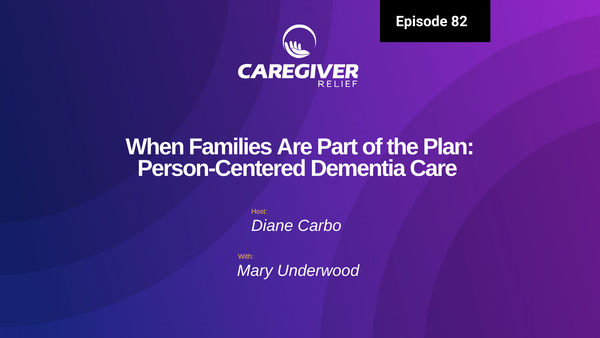Who Pays for Respite Care?
Respite care can be paid for through a mix of sources, including Medicaid, veterans' benefits, long-term care insurance, and out-of-pocket funds. Some nonprofit organizations and state programs also offer financial assistance for eligible caregivers.

What is Respite Care?
Respite care is a form of temporary caregiving for people who need extra support. It often takes place in a care home or other residential setting, and can provide both physical and emotional relief for caregivers as well as those they are caring for.
Respite care can last from a few days to six weeks or more and typically includes activities such as personal care, meals, recreational and social activities, support with medication, housekeeping and shopping. Respite care services can be provided in the home or at an alternative location.
Who is Eligible for Respite Care and What Services Can Be Provided?
Respite care services are available to most people who need some extra help caring for a family member or friend due to illness, disability, aging or another circumstance. The types of services available through respite care vary depending on the particular needs of the person being cared for. Generally, respite care can include anything from providing companionship and meal preparation to helping with dressing and bathing, taking medication or providing transportation.
In order to be eligible for respite care, individuals must meet several criteria including age restrictions, medical necessity and financial need. It is important to note that some respite care services may require additional fees.
Costs of Respite Care
Respite care is an invaluable service for both caregivers and those they are caring for. While the benefits are clear, the cost of the service must be considered. Fortunately, there are several ways to cover respite care costs.
The cost of respite care depends on the type of services you require. Services can range from a few hours a week of in-home care to more intensive overnight stays or short-term residential placement. Costs for these types of services vary widely, depending on the provider and the area in which you live.
Fortunately, there are several financial options available to cover these respite care expenses. Depending on individual circumstances, families may be able to take advantage of public or private insurance policies or government programs. Let’s take a closer look at each of these funding options.
Benefits of Respite Care for Caregivers and Receivers
Respite care can provide immense physical and emotional support for both the caregiver and those being cared for. Respite care allows carers to take much needed time away from their responsibilities, giving them the opportunity to rest and recharge. This time away can help to reduce stress levels and prevent burnout.
For those receiving care, respite care can offer companionship and relief from loneliness and boredom. It can also provide opportunities for socialization and activities that they may not otherwise be able to enjoy. They will also have access to medical assistance in case it is required.
Effects such as improved physical and mental wellbeing and enhanced quality of life are common positive outcomes of respite care provision for both caregivers and those being cared for.
Summarizing Medicare's Coverage Policies for Respite Care
Medicare, a federal health insurance program for those aged 65 and over and some individuals with disabilities, covers several aspects of respite care. Generally, Medicare covers short-term stays in a nursing home or hospice for individuals with chronic conditions who need assistance managing persistent health problems. However, Medicare does not cover at-home services such as those offered by home health agencies.
Medicare Part A (hospital insurance) may cover inpatient respite care if the individual is determined to be eligible. Medicare Part B (medical insurance) may cover certain services provided by home health agencies, such as physical therapy or speech therapy, that are needed to manage a chronic medical condition. If these services are needed during an episode of respite care, they would be covered.
While Medicare can provide some respite care coverage, it is important for individuals to understand the specifics of what is covered and what is not. Individuals should speak with their doctor and contact Medicare for more information about the coverage that is available.
Medicaid Coverage Policies for Respite Care
Medicaid, a U.S. health insurance program for those with low incomes and limited resources, provides coverage for respite care for eligible adults and children. Each state has its own Medicaid program, so policies may vary slightly from state to state. In general, though, Medicaid covers at least some or all of the cost of respite care depending on the individual's needs and eligibility.
In order to be eligible for respite care coverage under Medicaid, the individual must meet certain requirements. These include being an adult or child with a disability, being over the age of 65, or being of a low-income status as set by the state. Additionally, the Medicaid program must offer coverage for respite care in the state and the individual must be enrolled in that state’s Medicaid program.
Once the individual is deemed eligible, the amount of coverage available will depend on the specific Medicaid plan and the services provided. Some states may require a doctor’s prescription or an assessment by a qualified professional before any coverage is granted. Other states allow for more flexibility when it comes to the amount of coverage available. Be sure to check the regulations in your state to see what is covered and what is not.
Private Insurance Coverage for Respite Care
Private insurance providers vary in their coverage policies for respite care, so it is important to research and understand exactly what your policy covers. In general, private insurance will cover the cost of respite care services provided either in the home or in an outside facility. It is important to check with your insurance provider to find out the specific services they cover and how much they are willing to pay.
Some examples of services that may be covered by private insurance are: short-term living arrangements, day or evening care, live-in services, help with meal preparation and shopping, transportation, and recreational activities. Private insurance may also provide support with medical equipment and supplies necessary for respite care.
It is also possible for private insurance providers to offer programs that provide long-term coverage for respite care. These programs can include payment plans, special rates, or discounted services. Be sure to research all available options to see which ones best meet your needs.
Challenges Faced by Families Without Public or Private Insurance
Families that don’t have access to public or private insurance may face significant challenges when it comes to paying for respite care. Respite care can be quite expensive, and without insurance coverage or other funding options, families may be unable to afford the care they need. Additionally, families without access to insurance may not be able to find a quality provider and may not have the resources to pay for additional services and supports.
Furthermore, the lack of access to insurance can be especially difficult for those who need long-term respite care. Long-term care is often only covered by insurance providers, so without insurance, families may not be able to get the support they need.
Government and Community Programs That Cover Respite Care Costs
If you’re a caregiver struggling to pay for respite care, there could be government or community programs designed to help families with these costs. Government-funded and community-based services are available to support caregivers and their families both financially and emotionally.
Federal programs such as Medicaid offer respite care services including adult day care centers, in-home personal care, and home health care aides. Some states provide additional funding for respite care through Medicaid waivers and other programs related to long-term care. Families may also contact local and state agencies to inquire about programs they can access to cover respite care costs.
Community-based services are typically volunteer-run organizations that provide respite care at no cost. These organizations include faith-based support groups, non-profit organizations that provide home care services, and even clubs or groups that provide social outings for those who need it. These organizations often accept donations of time, money, or other resources to help cover the costs of providing respite care.
Reducing Respite Care Costs
Paying for respite care can be daunting, but there are ways to reduce the cost. Knowing what’s available to help cover the expense is key in reducing the overall cost of respite care.
Here are some tips to help make respite care more affordable:
- Research government assistance and programs that can help cover respite care costs, such as Medicaid.
- Check with your private insurer for coverage.
- Look into national, community, and local organizations that provide assistance.
- Learn about sliding-scale payment options.
- Utilize volunteers who can provide respite care.
- Explore tax deductions and credits that may be available.
It's important to remember that there are resources available to help cover the expense of respite care. Taking the time to research and explore these options can help make respite care more affordable and accessible for those who need it.
When selecting an appropriate respite care provider, it is important to understand your needs and those of the person you are caring for. You will need to consider not only the available services but also the cost, safety, and reliability of the provider.
The best way to find a suitable provider is to ask for referrals from friends, family, and healthcare professionals. You can also search online for respite care providers in your area.
Once you have narrowed down the list of potential providers, you should start making inquiries. Ask about their qualifications, experience, availability, and the cost of their services. It is also a good idea to check with any relevant state or local regulatory bodies to ensure the provider meets licensing requirements.
When interviewing potential providers, observe the atmosphere of the facility and ask questions about the daily routine. Consider how clean and organized the facilities are, the accessibility of the premises, and the staff-to-patient ratio.
It is important to discuss safety protocols with the respite care provider and to make sure they are familiar with any special needs the person you are caring for may have. Be sure to also inquire about emergency procedures and protocols in case of an accident or medical emergency.
Finally, try to visit the facility again with the person you are caring for to see how they interact with the respite care provider. This will help you decide if they will be comfortable with the provider and in the environment they will be spending their time in.
By taking the time to research and interview various respite care providers, you will be able to find the right one to meet the needs of both you and the individual you are caring for.
Conclusion
Respite care can be a valuable and life-changing form of assistance for family caregivers. Having access to respite care can help provide relief from the physical, emotional, and financial demands that caring for a person in need can bring. It is important to understand your coverage options and eligibility for respite care, as the cost of this service can vary. Medicare, Medicaid, and private insurance providers all offer coverage for respite care services, but it is important to note that not all services are covered by all plans. Government and community programs may also be available to cover respite care costs, giving families who lack access to public or private insurance options.
When selecting a respite care provider, it is important to carefully research the services they offer and their fees to make sure they meet your needs. This guide has served to provide you with an overview of respite care and the options for funding it. Hopefully, this information has been useful in helping you to plan for providing respite care for your loved ones.
Our Resources section can help you find the information and tools that you need. We have courses, videos, checklists, guidebooks, cheat sheets, how-to guides and more.
You can get started by clicking on the link below. We know that taking care of a loved one is hard work, but with our help you can get the support that you need.
Click here to go to Resources Section now!





